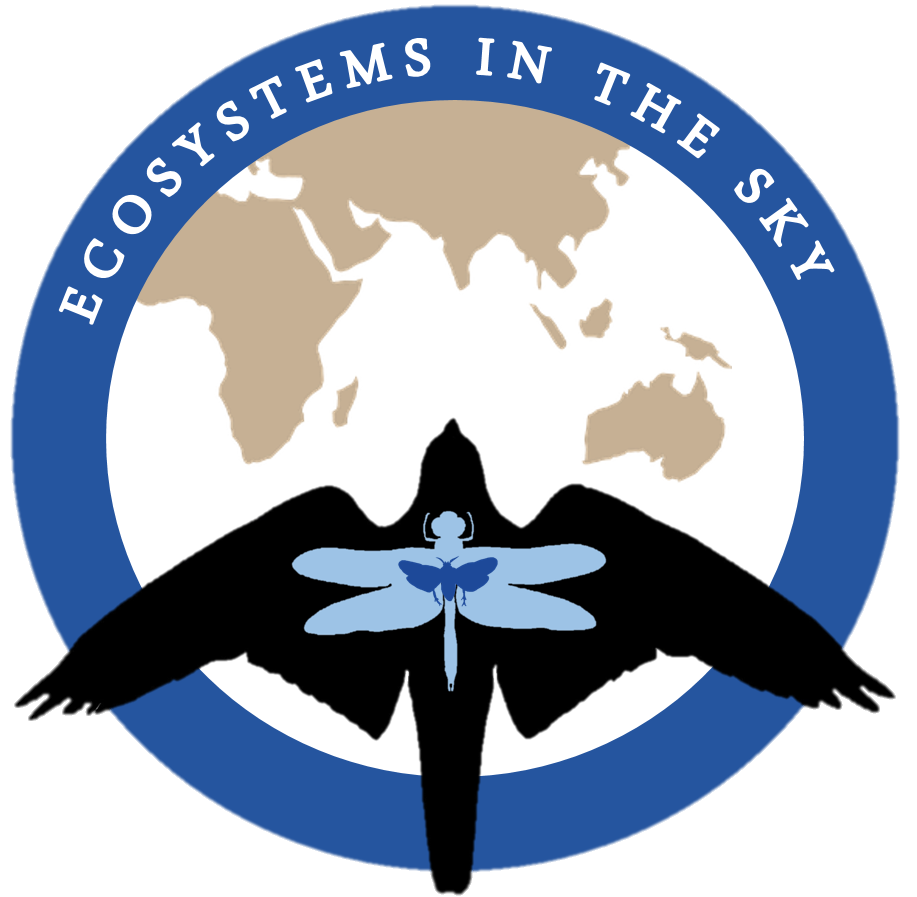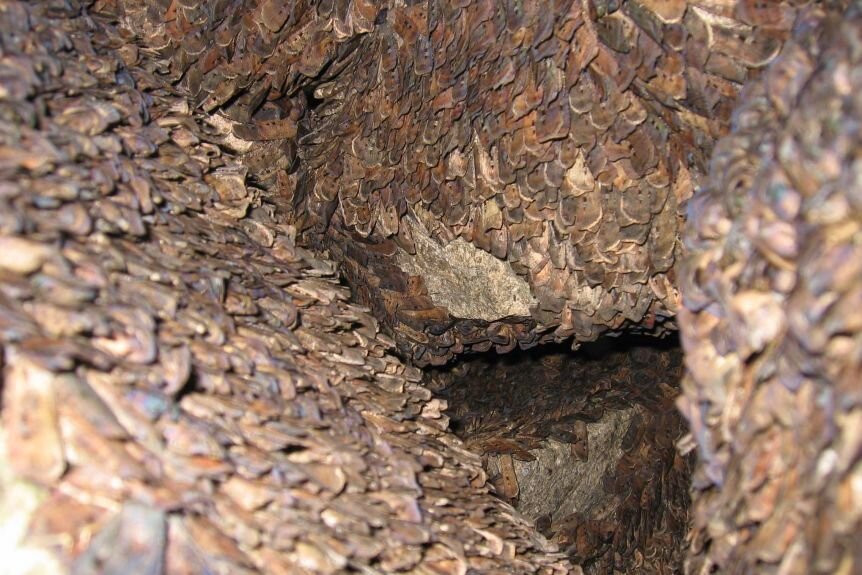Insect migratory connectivity
Animal migration is a natural phenomenon that happens all over the globe, and at an enormous scale. Wildebeest crossing the savanna in search of greener pastures, whales wandering the ocean pursuing krill and songbirds leaving the cold north in autumn for the warm, lush refuge of the south, they are all migrants on the move.
But not only the charismatic vertebrates travel seasonally and annually. Insects migrate too. Butterflies, hoverflies, dragonflies, beetles, planthoppers and the tiniest of aphids, they all take to the wing and just like birds and wildebeest, can journey for hundreds of kilometres.
Wildebeest by Jane Rix
Humpback whale migration in the Pacific Ocean
Much is yet to be revealed by animal migration in general, and insect migration in particular. Sometimes we do not know why migration occurs some years, but not others, what triggers an individual to leave, how they know where to go and when to stop going, and how they find their way.
Bird migrants have been studied excessively, and this group of animals has taught us a lot about the intricate and astonishing adaptations of migratory physiology, navigation and behaviour.
In some bird species, individuals breeding in one area, say Scandinavia, have been observed to only also winter in one area, say the Senegal delta. In other words, even though a species can be widely distributed both during breeding and wintering, certain populations, certain groups of individuals, never intermingle. This phenomenon is known as migratory connectivity.
The figures below, depicting the linkage between different parts of the ortolan bunting’s migratory range, is an example of high migratory connectivity. The North European population of ortolan buntings move exclusively from one localized breeding range, to another localized wintering range, with no mixing with individuals from other regions. The same holds true for the Eastern European/ Russian population.
High migratory connectivity in the ortolan bunting (Emberiza hortulana) by Jiguet et al 2019
Ortolan buntings: female by Rashed Al Hajji and male by Tobias Lukowicz
As many adaptations and features of bird migration are found among insect migrants, could migratory connectivity also be present in insects?
This is a question that my co-authors and I asked ourselves. We focused on 5 different insect species, and set out to analyse the evidence for connectivity in their migratory systems.
The 5 focus species were:
The monarch butterflies (Danaus plexippus)
The bogong moth (Agrotis infusa)
The fall armyworm moth (Spodoptera frugiperda)
The green darner (Anax junius)
The brown planthopper (Nilaparvata lugens)
(From top left): the fall armyworm, the monarch, the brown planthopper, the green darner and the bogong moth. By Gao et al 2020
What does the insect migration map look like?
Evaluating the ‘migratory connectivity’ concept’s applicability to insect migrants meant to first consider how insect migrants may differ from birds in their migration.
As insect migrants, unlike many other migrants, complete a migratory circuit over several generations, a direct comparison between, for example a migratory map like the ortolan bunting’s and an insect’s, is impossible. The green darner, for example, migrate across the entire North American continent, but only one generation at a time.
Another important distinction between birds and insects is the amount of influence they have over their movement. Insects decide when to leave, and some engage in directed flights, but many of them are very reliant on wind direction, and hence, will not migrate from one very specific location to another. An exception is of course the bogong moth. Even though the exact paths of certain individual bogong moths may not be known, we do know that only a couple of specific caves in the Australian Alps are the goal of their migratory journeys. And, unlike the green darner, the bogong moths do not migrate to the caves to breed and die, but to wait out the droughts of summer, and then the same individuals return to their breeding grounds further north.
The multi-generational circuit of North America by the green darner, by Hallworth et al 2018
Bogong moths lining the walls of a cave by Dean Heinz
Is there migratory connectivity in insects then?
The monarch
In the monarch, which is a species capable of directed movement and that uses a time-compensated solar compass to navigate, the expectation was that connectivity would be high, especially as eastern and western population appear separated by the Rocky mountains. Indeed, western populations on the Pacific coast do all winter in the same area in Mexico, hinting at high connectivity. However, recent findings have complicated this picture, showing that more inland populations, east of the mountains, migrate through riverine corridors, reaching the same wintering grounds as Pacific populations.
The bogong moth
There is still some unanswered questions that need a solution before the migratory connectivity of the bogong moth can be resolved. In one scenario, all moths from a particular breeding range may migrate to just a certain subset of alpine caves, in which case connectivity would be high. But, an alternative scenario, where individuals from the entire breeding range split up over all caves, is also possible.
Aggregating monarchs at their wintering site, by Agunther (Creative Commons Attribution 3.0 Unported)
The green darner
The migration of this species is the best known of any dragonfly in the world. However, there are still information lacking on its migratory behaviour, that is needed to determine the degree of connectivity it has across North America. It is very capable of directed movements, and the Rocky Mountains may very well have separated western and eastern populations leading to high connectivity between southern and northern breeding grounds. However, genetic studies suggest that genetic exchange occur over the continent, and thus more detailed gene studies are needed to disentangle the picture.
The fall armyworm moth
Unlike the three previous species, the fall armyworm relies much more on winds to carry it during migration, limiting its ability to direct it movements to a preferred area. Therefore it is very surprising that genetic studies are indicating a distinct pattern, separating Texas populations from Florida populations. It appears that the Appalachian Mountains constitute an important barrier, keeping moths from Florida and Texas apart, except at the southern and northern fringes of the mountain range where they come into contact and interbreed.
“The annual migration circuit of fall armyworm moths (Spodoptera frugiperda) in eastern North America, an example of comparatively high connectivity. The populations of fall armyworm which breed in Texas (blue) and Florida (black and grey) during the winter can be reliably identified by their haplotype ratios, allowing the migratory pathways of these two populations to be delimited. The Texas population expands during the spring and summer over the course of several generations throughout eastern North America to the west of the Appalachian Mountains (dark blue arrows), and returns to Texas during the autumn (light blue arrows), largely without mixing with the Florida population. These moths expand into the region largely east of the Appalachians each spring (black arrows) and return to Florida in the autumn (grey arrow). There is only a limited amount of hybridisation between the Texas and Florida populations during the summer-breeding period, in the regions to the south and north of the Appalachians (overlapping blue and grey circles)” from Gao et al 2020
The brown planthopper
Just like the fall armyworm moth, the brown planthopper uses high altitude winds to travel and would have very little influence over the direction of its migration, other than the very decision to enter a preferred wind or not. In Asia, where this particular pest planthopper resides, winds are governed by the movement of the InterTropical Convergence Zone (ITCZ). The brown planthopper feeds on rice, and each year, migrations occur from East Asia in spring to South-East Asia and then back in autumn, by a subsequent generation. It was assumed that this loop was entirely separated from populations in South India, specifically as the two showed divergence in behaviour towards resistant rice strains. Some genetic differences have also been found, but the existence of gene flow has also been identified, indicating a relatively low level of migratory connectivity within these two geographic populations
Low or absent migratory connectivity in the brown planthopper in South and Eastern Asia, by Gao et al 2020
Thus, in conclusion, more information is still needed, and in general, migratory connectivity is mostly low or absent in the insect migration systems we know. The fall armyworm provides a tantalising exception, and considering how many insect systems there are left to understand, much can still surprise us when it comes to insect migration. For example, research into the bogong moth system is currently ongoing, and this extraordinary insect migrant will undoubtedly have more to teach us.
In bird systems, migratory connectivity is often of key importance for conservation actions, as certain populations rely on certain routes and stop-over sites for their survival. The threat of loosing a stop-over site or specific area is often much less pronounced in insects, with some exceptions. For example, loss of nectar resources along the route for migrating monarchs, and human interference with the overwintering aggregations, are both believed to cause the declines seen in this species in North America.
References
Dreyer et al 2019. The Earth’s Magnetic Field and Visual Landmarks Steer Migratory Flight Behavior in the Nocturnal Australian Bogong Moth. Current Biology, 28:13 2160-2166.e5. https://doi.org/10.1016/j.cub.2018.05.030
Gao, B., Hedlund, J., Reynolds, D.R. et al. The ‘migratory connectivity’ concept, and its applicability to insect migrants. Movement Ecology 8, 48 (2020). https://doi.org/10.1186/s40462-020-00235-5
Hallworth et al 2018. Tracking dragons: stable isotopes reveal the annual cycle of a long-distance migratory insect. Biology Letters 14:12. https://doi.org/10.1098/rsbl.2018.0741
Jiguet et al 2019. Unravelling migration connectivity reveals unsustainable hunting of the declining ortolan bunting. Science Advances, Vol. 5, no. 5, eaau2642
DOI: 10.1126/sciadv.aau2642











